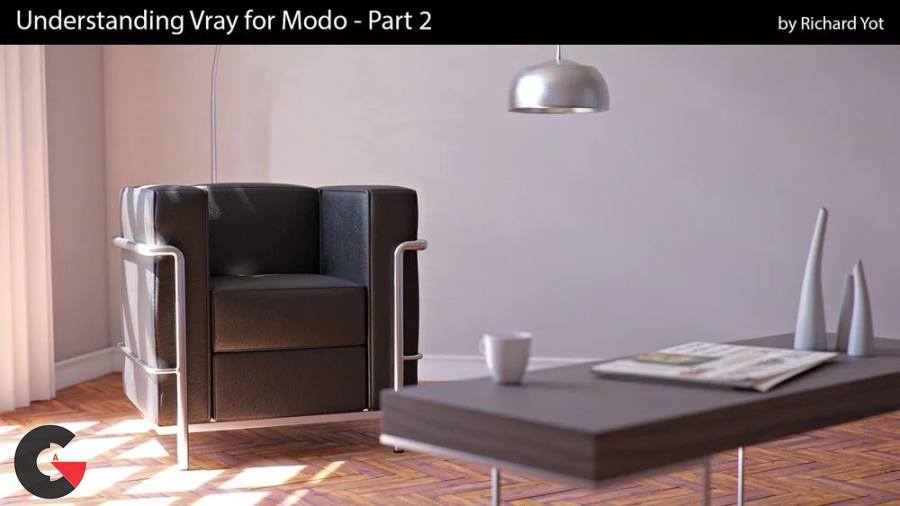

Understanding Vray for Modo – Part 2 : This second instalment of the Vray for Modo training will help to demystify how to best approach using Vray in Modo, particularly when it comes to creating materials and what render settings to use.
In this training you will go into more in-depth material creation, using both the Shader Tree and the Schematic view. The creation of coated materials using the Schematic is demonstrated, giving a good understanding of Vray’s Blend Material. There are step-by-step examples demonstrating how to create a layered material using Vray’s own procedural textures, and a practical example of Vray’s Tri-Planar projection in use. These techniques will allow you to quickly build complex shaders using Vray native materials and textures, with a range of options that are powerful and flexible.
There is also a video about displacement, which explains how to get the most detail out of your displacement maps as well as discussing some of the options available in Vray, and when to use them. Additional videos take a look at Vray Proxies and Portals.
Finally there are some real-world examples of interior renders using both HDR images and Area Lights for lighting, with strategies to get the fastest possible render times using either option to light your scenes.
As an additional bonus there is a selection of 20 free materials included, these have been created specifically for this training and there will also be some bonus videos added to show how some of these materials were created.
Direct download links 677 MB :
Direct download link reserved for subscribers only This VIP
Dear user to download files, please subscribe to the VIP member
- To activate your special membership site, just go to this link and register and activate your own membership . >>>register and activate<<<
- You can subscribe to this link and take advantage of the many benefits of membership.
- Direct downloads links
- No ads No waiting
- Download without any limitation ، all content in website
CGArchives Is The Best
Review
Review
Review this tutorial